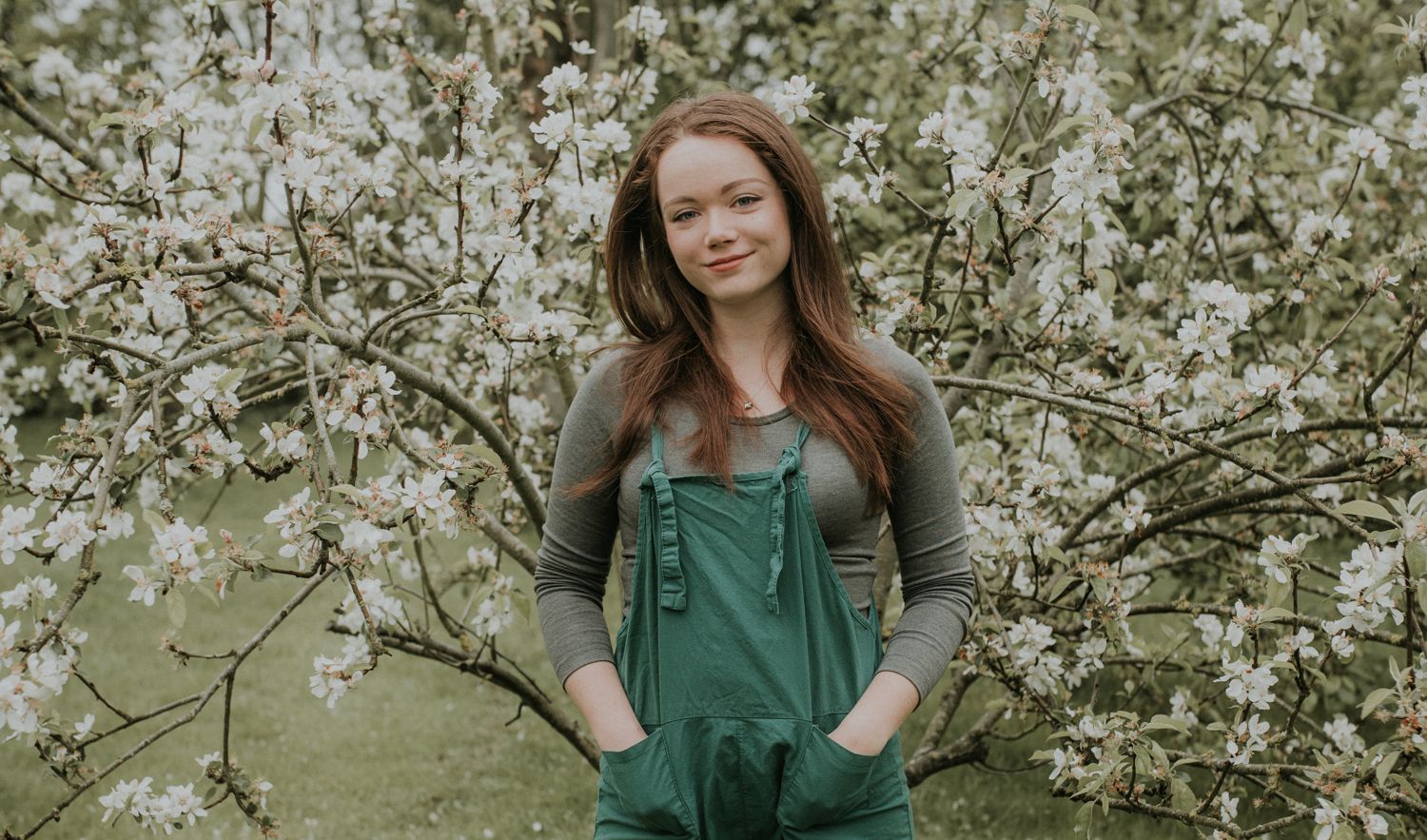Until I was in my mid-teens, wildlife was the background to my life; phenomena to be played amongst. I grew up in an idyllic mid-Leicestershire village surrounded by the growing National Forest. Chattering starlings, mewling buzzards, smooth cuckoo calls and staccato woodpeckers formed a soundscape atop the distant roar of the M1. I turned ten and the first episode of Springwatch aired; obsessed, I asked for a camera trap of my own and captured grainy photos of deer, badgers, and otters.
The education system, of course, sought to squeeze my understanding of nature into boxes. Classifying plants is Biology – but understanding their succession is down the corridor in Geography. Want to write about wildlife? That’s English. And if you feel like actually being in nature, you’d better hope orienteering was on the cards for PE.
The Wildlife Trusts became my environmental ‘home’
I got an internship at an ecological consultancy the summer before my A Levels. There was an official project about water quality I had to write a report on, so every once in a while I’d look at dead caddisfly larvae under a microscope. The majority of the time, though, I was out doing surveys with the wonderful team at EMEC Ecology. On surveys I waded through rivers searching for crayfish, studied banks for signs of water vole, identified butterflies, and helped with Phase 1 Habitat assessments. I was useful at night-time, given I could hear the squeak of pipistrelle bats without a detector, but undoubtedly gained more from the experience than I gave. I soaked up all of the knowledge I could get my hands on. EMEC is a subsidiary company of Nottinghamshire Wildlife Trust, and so began my love for the Wildlife Trusts. They’ve felt like home ever since.
Wildlife is under threat, and I have to do something about it
At the heart of that hot summer was a key learning, and one that has not changed to this day: wildlife is under threat, and I have to do something about it.
Fast forward three years. I was a few hundred miles south, studying a BSc in Biology at the University of Exeter. This had seemed like the next best step towards doing something about it, but spending hours in lecture halls and sterile laboratories didn’t feel like I was doing much of anything at all. I decided to get more practical, and started running the environmental arm of the Exeter Student Volunteers. At an event I met someone who encouraged me to get in touch with the Devon Wildlife Trust (DWT), and soon enough I became a volunteer Database Administrator, walking to the HQ at Cricklepit Mill one afternoon a week to enter details into a CRM.
In 2016 I was made aware of a scheme to increase employability of disadvantaged students: the university would pay my internship wage if I could find a suitable placement. The Communications team at DWT welcomed me to the role of Communications Assistant for the summer, then offered me a short-term job to cover a staff member’s leave. I finally packed up my desk seven months later, having enjoyed talking to visitors at reception, raising thousands through the Christmas shop, and managing a team of volunteers. I returned to my university degree and missed the practicality of work, the feeling of doing something about it.
Which is why, a year and a half later, the advert for Trustees of DWT caught my eye.
It all starts with applying...
The Trustees had often walked by my desk on their way to the main meeting room, and I remembered feeling in awe of everything they had to know about and decide upon. I would never have thought to even apply for this voluntary governance role if it wasn’t for the encouragements sprinkled throughout the advert’s text: the Trustees were particularly looking for new members from underrepresented backgrounds; training could be provided; potential and values were more important than maturity.
I was delighted to get an interview. I thought it went okay but presumed my fluffing of words meant I wouldn’t hear from the team again. I chalked it up to a good learning experience and walked home via Greggs, munching on a pasty that steamed into the cold, sunny air.
I remember feeling a bit silly. Everyone else I’d seen in the building before the interview wore smart suits and had a sense of authority to them. I was wearing a heavy knitted jacket and the one pair of black trousers I owned, which were still slightly damp given that I was living in a cold student house and had spilled tomato sauce down them the previous day in my part-time kitchen job. The interview panel, however, decided they wanted me on board. In April 2018 I became the youngest Trustee of any Wildlife Trust charity.

Becoming a trustee of Devon Wildlife Trust
The process of becoming part of DWT’s Board was challenging, but I relished how different it all was to my university degree and part-time jobs. I had to learn what minutes were; what an agenda consisted of; what was meant by different acronyms. I had induction meetings with members of staff I’d known in my previous role, but this time we talked much more strategically. I did so much reading: official guidance from the Charity Commission; research papers on how to offer helpful feedback; blogs about stepping into a leadership role.
I was daunted by legalese at times: trustees hold ultimate responsibility for how a charity is governed, managed, and run, and it was critical that I understood what I needed to in order to make decisions on everything from land acquisitions to research studies. I was particularly encouraged by the CEO, Harry Barton, and Chair of the Board Sue Goodfellow. Other members of the Board helped by chatting about butterflies over sandwiches before meetings, or offering me lifts.
Developing into my role as a wildlife charity trustee
Two key developments in my role as a Trustee have occurred in the past 12 months. Firstly, a Nominations and Development Sub-Committee formed in order to focus on improving the board through recruitment and training. I was enjoying the opening chat of the meeting when, in the election agenda item, Sue put me forward as Chair. Harry agreed, as did everyone else. I remember finding this almost absurdly funny, and accepted it in a daze.
Becoming Chair helped me to realise that I’d unintentionally established a power structure in my mind – one in which I was right at the bottom.
My first few experiences chairing felt confusing and difficult and I would take hours afterwards to recuperate from the stress. Since then, my confidence has grown exponentially. Becoming Chair helped me to realise that I’d unintentionally established a power structure in my mind – one in which I was right at the bottom. No one else saw it like that, and I no longer do either. Now I’ll happily conclude a discussion, decide actions, or remind people to raise their hand in the Zoom room if they want to add something!
The second was becoming Director of Devon Wildlife Enterprises Limited. This is the umbrella company for DWT’s ecological consultancy, Devon Wildlife Consultants, and I sit on the board as a trustee representative. I recently attended my first meeting and enjoyed applying the skills I offer in my day job of running a marketing business. It’s only just occurred to me now, writing this, how appropriate it is to have returned to Devon’s version of EMEC, where I first realised the power I could have in changing circumstances for wildlife for the better.

Wildlife is under threat, and I have to do something about it. This core understanding hasn’t changed since I was a teenager. At risk of sounding pessimistic, I don’t believe it will ever change. The threats to nature will shift with whatever new or elevated pressure humans can exert – but so too will the abilities of those who care about protecting wildlife.
Sometimes I worry that reading papers, replying to emails, and attending meetings isn’t doing something about it. But then I remember the impacts of those decisions informed and made by governance which, in a pandemic, looks like staring at my laptop screen and occasionally talking or typing.
I didn’t understand what trustees did until I became one
I didn’t understand what trustees did until I became one, and I think this is probably true of most people without senior leadership experience. Indeed, no one else my age seems to know what a trustee is, unless they too are involved with the Young Trustees Movement. That said, coming to the end of my first term, I feel like I’m only just now stepping into what it means to be a trustee. Each term is three years long, and most trustees serve two terms, but need to be re-elected at the end of each.

It would be a lot easier to be a trustee if I was retired and wealthy and had decades of leadership experience. But boards need the perspectives that young people can offer. As such, charities need to do more to enable their participation, from recruitment to induction. I’m working on all of this with my Nominations and Development Sub-Committee, and talking to other Wildlife Trusts about how they can do more.
If the conservation movement wants to speak to a wider audience (and it does), it needs to have a more diverse leadership. On surveys I tick multiple boxes: disabled, female, low-income, under the age of 30, LGBTQIA+ – but I’m not a tick box. My voice is important in the movement I care so much about!
🌱 Find trustee vacancies in our volunteering section.
You can connect with Rebecca and learn more about her journey as a trustee on Twitter, Instagram, and LinkedIn.

